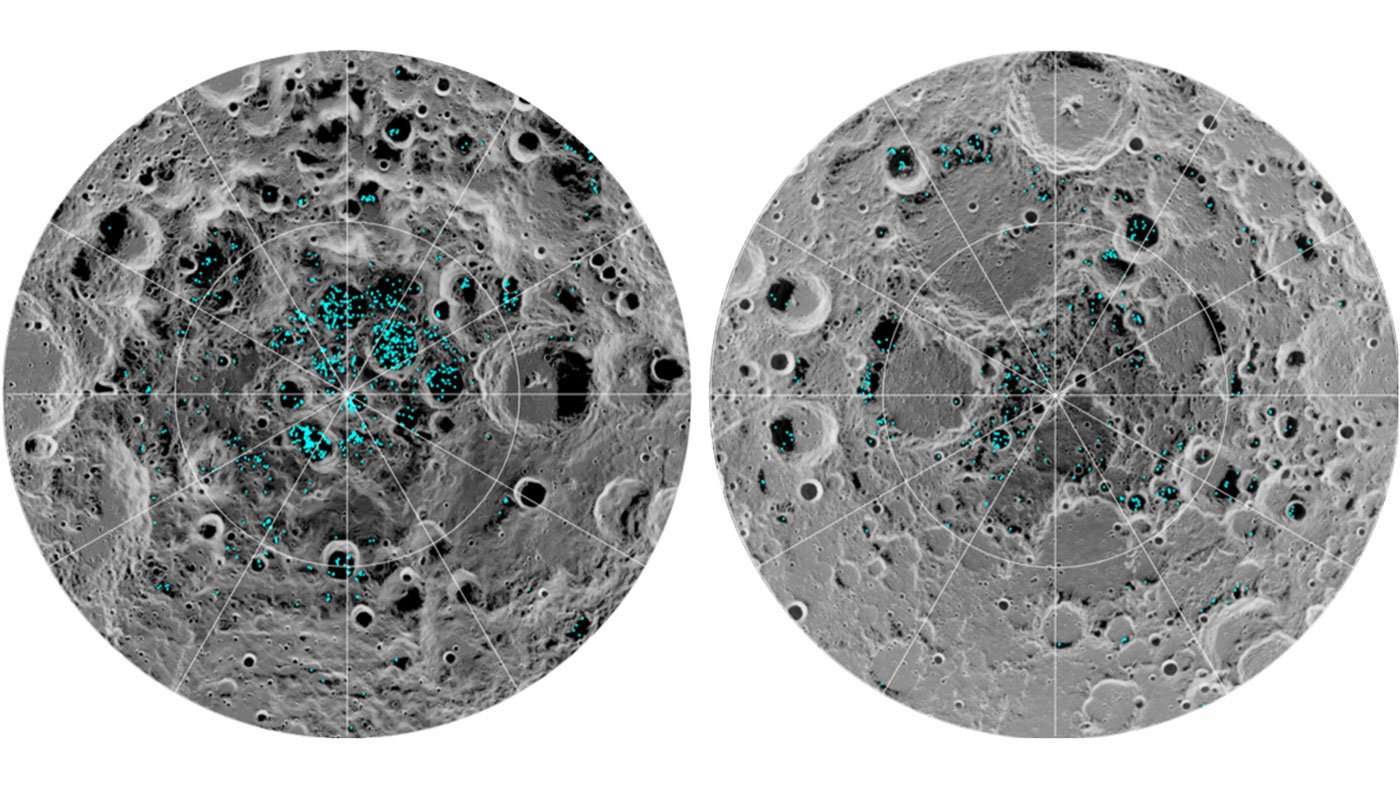In the darkest and coldest parts of its polar regions, a team of scientists has directly observed definitive evidence of water ice on the Moon's surface. These ice deposits are patchily distributed and could possibly be ancient. At the southern pole, most of the ice is concentrated at lunar craters, while the northern pole's ice is more widely, but sparsely spread.
A team of scientists, led by Shuai Li of the University of Hawaii and Brown University and including Richard Elphic from NASA's Ames Research Center in California's Silicon Valley, used data from NASA's Moon Mineralogy Mapper (M3) instrument to identify three specific signatures that definitively prove there is water ice at the surface of the Moon.
M3, aboard the Chandrayaan-1 spacecraft, launched in 2008 by the Indian Space Research Organization, was uniquely equipped to confirm the presence of solid ice on the Moon. It collected data that not only picked up the reflective properties we'd expect from ice, but was able to directly measure the distinctive way its molecules absorb infrared light, so it can differentiate between liquid water or vapor and solid ice.
Most of the newfound water ice lies in the shadows of craters near the poles, where the warmest temperatures never reach above minus 250 degrees Fahrenheit. Because of the very small tilt of the Moon's rotation axis, sunlight never reaches these regions.
Previous observations indirectly found possible signs of surface ice at the lunar south pole, but these could have been explained by other phenomena, such as unusually reflective lunar soil.
With enough ice sitting at the surface -- within the top few millimeters -- water would possibly be accessible as a resource for future expeditions to explore and even stay on the Moon, and potentially easier to access than the water detected beneath the Moon's surface.
Learning more about this ice, how it got there, and how it interacts with the larger lunar environment will be a key mission focus for NASA and commercial partners, as we endeavor to return to and explore our closest neighbor, the Moon.
The findings were published in the Proceedings of the National Academy of Sciences on August 20, 2018.
NASA's Jet Propulsion Laboratory, Pasadena, California, designed and built the moon mineralogy mapper instrument and was home to its project manager.
DC AgleJet Propulsion Laboratory, Pasadena, [email protected] CullerAmes Research Center, Silicon [email protected]

SittingTree on August 21st, 2018 at 05:43 UTC »
This is actually really cool. About six years ago some NASA guy came to my high school and talked about a project that he was working on in which they planned on searching the poles more definitely to find ice and it's quality hidden in craters.
He told us of the possibilities that would create. My personal favourite was the possibility of setting up a space station on the moon where ships could land, refuel, and take off again without having to fight the crazy power of earth's gravitational pull, allowing for further exploration.
He said this would be possible because one of the main components in rocket fuel is hydrogen, and oxygen could be used for crew.
I don't know what more science discovery is necessary for this to be possible, but it amazes me to think about it.
TLDR Possible moon Space Station.
foggynotion on August 21st, 2018 at 03:54 UTC »
it says a lot about 2018 when they find ice on the moon and you're just like 'eh'
fuck_your_diploma on August 21st, 2018 at 02:33 UTC »
I'm sorry, I'm no space nerd or anything beyond that but, would anyone mind to explain WHY it took them 10 years to "confirm" it's water, as the mission happened 10 years ago?
Nasa even crashed a spacecraft into the 100km-wide Cabeus crater to confirm this, in 2009.
It's not like we're seeing something new here, so why the noise after so much time?
https://www.theguardian.com/science/2009/nov/13/nasa-lcross-water-moon